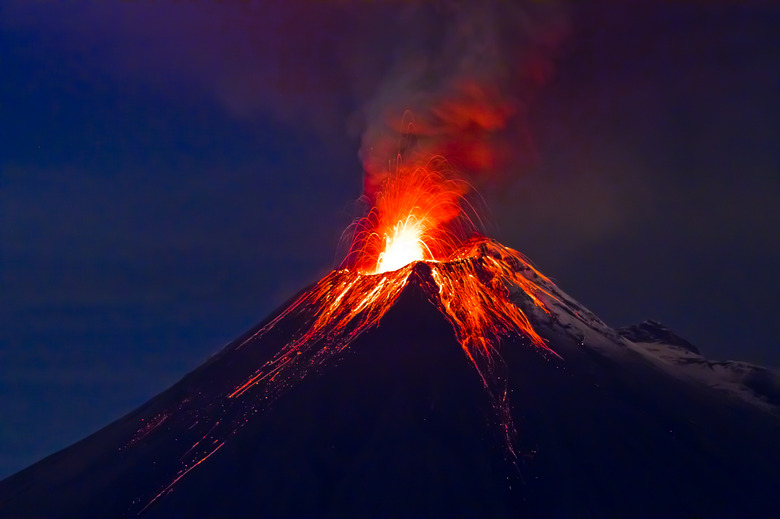The History Of Volcanology
The power and volatility of volcanoes have mystified man since the beginning of time. The drive to understand volcanoes led to the scientific field of volcanology. Volcanology is the study of volcanoes and derived from the Latin word "Vulcan" the Roman god of fire. Specifically, volcanology is "the branch of geology that deals with volcanism and the processes involved in magma flow and eruption through a vent in the earth's surface," according to the U.S. Geological Survey (USGS) division of the Department of the Interior. The history of the field is long and storied.
Early History
Early History
The Greeks and Romans believed the smoke and lava fragments represented the work of the mythical blacksmith "Vulcan," the god of fire. The eruption of Mount Vesuvius, which destroyed the city of Pompeii, occurred in 79 AD. The eruption cemented Mount Vesuvius' place in history as one of the most destructive volcanoes in history and started the science, with the detailed description by Pliny the Younger. The early history of volcanology was dependent on eyewitness accounts and written history of the time.
1800's
1800's
Friedrich Wilhelm Heinrich Alexander von Humboldt, in 1808, wrote Voyage de Humboldt et Bonpland, which laid the foundation for geology, meteorology and volcanology. Humboldt scientifically described his observation of the remnants of the eruption of Chimborazo in Ecuador. The April 1815 eruption of Mount Tambora in Indonesia was large enough to entice study a century later. Analysts have tried to reconstruct the course of events, because the eruption spewed a cloud that reflected sunlight and produced a year without summer in most of the northern hemisphere. In 1841, the first volcanic observatory, Vesuvius Observatory, was founded and run by the famous volcanologist Giuseppe Mercalli. Mercalli developed the seismic scale, also known as the Mercalli scale.
USGS
USGS
The U.S. Government saw the need for an agency to consolidate the earth sciences under one umbrella. "The United States Geological Survey was established on March 3, 1879, just a few hours before the mandatory close of the final session of the 45th Congress, when President Rutherford B. Hayes signed the bill appropriating money for sundry civil expenses of the Federal Government for the fiscal year beginning July 1, 1879," as described in the About Us section of the USGS's web site. Its purpose is to concisely provide scientific information to protect life and property.
1900's
1900's
In 1902, the eruption of Mount Pelee on the island of Martinique incinerated the city of St. Pierre and its 30,000 inhabitants. At the time, pyroclastic flow was an unknown characteristic of volcanic eruptions but was found to be the cause of the destruction. In 1922, the official journal, of the International Association of Volcanology and Chemistry of the Earth's Interior (IAVCEI), was founded and titled Bulletin Volcanologique. The association was founded in 1919. Volcanology was considered to be still in its infancy until the eruption of Mount St. Helens in Washington State. The eruption provided a plethora of scientific information and pushed volcanology into maturity.
Volcano Monitoring
Volcano Monitoring
Volcanoes are monitored with seismic devices, to watch for increased seismic activity normally associated with future eruptions. Thermal devices monitor temperature changes in nearby lakes and vents, which may predict eruptions. Gas equipment looks for chemical changes, because volcanoes usually produce a high volume of sulfuric gas. All information is gathered and maintained by the USGS to predict possible eruptions as means of protection.
Cite This Article
MLA
Chandler, Joe. "The History Of Volcanology" sciencing.com, https://www.sciencing.com/history-volcanology-5397406/. 10 September 2009.
APA
Chandler, Joe. (2009, September 10). The History Of Volcanology. sciencing.com. Retrieved from https://www.sciencing.com/history-volcanology-5397406/
Chicago
Chandler, Joe. The History Of Volcanology last modified August 30, 2022. https://www.sciencing.com/history-volcanology-5397406/
